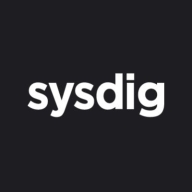

Sysdig Monitor and LogicMonitor are competitive products in the IT monitoring space. LogicMonitor appears to hold an edge due to its comprehensive feature set, which many find justifies its cost.
Features: Sysdig Monitor offers real-time performance monitoring, security insights, and versatile integrations. LogicMonitor stands out with advanced predictive analytics, strong automation capabilities, and broad device monitoring.
Ease of Deployment and Customer Service: Sysdig Monitor provides straightforward deployment with strong container-native support. LogicMonitor requires a more complex setup due to broader integration possibilities but offers exceptional customer service.
Pricing and ROI: Sysdig Monitor is praised for competitive pricing, delivering significant ROI with minimal initial outlay. LogicMonitor demands a higher setup cost, but its broader capabilities are considered worth the investment for enhanced operational insights.


LogicMonitor provides infrastructure and network monitoring, alerting, and reporting across environments like AWS, Azure, and on-premises.
LogicMonitor aids businesses and managed service providers in maintaining system health, performance, and availability. It supports various technologies including Citrix, Cisco Voice systems, operating systems, virtual machines, and network devices. Businesses benefit from dashboards and data insights for proactive management, customizable data sources, and integration with third-party applications like Slack or ServiceNow. AI technology enhances monitoring capabilities by recognizing normal behavior and updating monitored elements, while multiple monitoring features consolidate data sources into one interface.
What are LogicMonitor's key features?
What benefits or ROI should users expect?
LogicMonitor is utilized across diverse industries by managed service providers to ensure seamless monitoring and management of clients' systems. This includes application performance monitoring, manual topology mapping, SLA calculations, and improvement of role-based permissions. Companies also seek enhanced resources view, better collector upgrade processes, and streamlined customization for monitoring from the repository.
Sysdig Monitor allows you to maximize the performance and availability of your cloud infrastructure, services, and applications. Built on open source, it provides immediate, deep visibility into rapidly changing container environments. You can resolve issues faster by using granular data derived from actual system calls enriched with cloud and Kubernetes context along with Prometheus metrics. Remove silos by unifying data across teams for hybrid and multi-cloud monitoring.
We monitor all Container Monitoring reviews to prevent fraudulent reviews and keep review quality high. We do not post reviews by company employees or direct competitors. We validate each review for authenticity via cross-reference with LinkedIn, and personal follow-up with the reviewer when necessary.